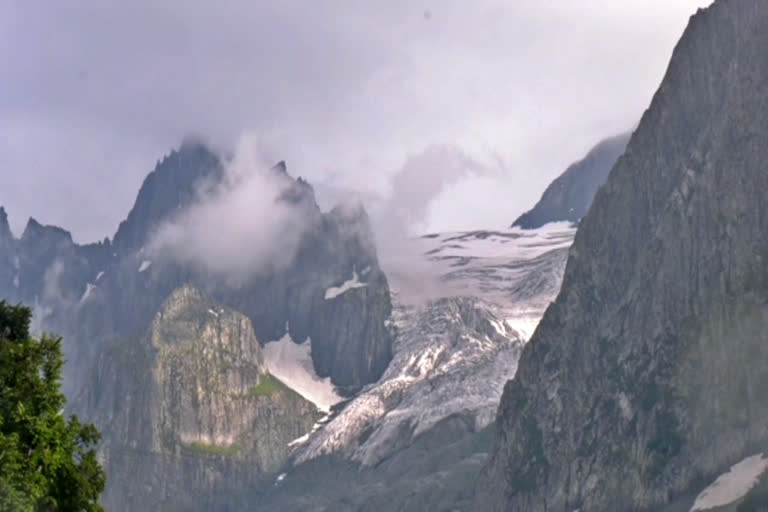Srinagar: Thajiwas glacier near Sonmarg in Jammu and Kashmir is known for the picturesque meadows that surround it and daylong hikes to waterfalls and its edge. Now, this massive chunk of ice is melting rapidly. According to researchers at the University of Kashmir in Srinagar, Thajiwas has receded more than 50 metres in the last three years alone.
Senior professor Irfan Rashid said thousands of glaciers in the Himalayan region of Kashmir are melting due to changes in the climatic system and land use and it's threatening the water supply of millions.
"Almost six glaciers have vanished since 1980s, as far as satellite data analysts is concerned. Mostly it is because of the changing climate, but there are many other factors associated with it. But as far as the larger region of Jammu and Kashmir region is concerned, they have vanished or are at the highest risk as far as disappearance of these glaciers are concerned."
Muhammad Ayoub Khatana is a nomadic herder, wandering with his tribe in search of good pastures for their cattle. Having observed the peaks and valleys of the region closely, Khatana says he's seen glaciers almost disappear before his eyes.
Also read: Thajiwas glacier in Sonmarg receded 50 meters in 3 years, experts warn of danger
"In the old days, the stream used to be covered under thick snow, starting from the glacier (Thajiwas). Now, it is not like before. The stream used to be so deep that one could barely cross it. Now, the water has receded, and the snow has also disappeared."
Experts say Kashmir Valley's biggest glacier, Kolhoi - which feeds two major tributaries of the River Jhelum - is also receding at an alarming rate, about a quarter since 1962.
According to Rashid, this rapid recession is directly threatening the livelihoods of millions of people living downstream. "Any change in the snow and glacier resources is going to have a direct bearing on the agriculture, hydropower and tourism sectors, and many other indirect sectors which are indirectly dependent on water-related things," he said.
Dwindling streams and canals have also impacted local apple cultivation, the main cash crop of the region that makes up more than 80 percent of India's apple production.
Muhammad Maqbool Bhat has been an apple farmer for decades. But the search for water needed to irrigate his orchards has now made the trade an expensive affair.
"In the old days, when I cultivated this apple orchard, there used to be streams and canals on all sides of the orchard, but as days passed, the water levels receded, and at one point of time, the canals dried up," he said.
"We were compelled to dig a borewell as alternate means for irrigation. It's expensive, as it needs the generator to lift the water and to irrigate. Despite this, the irrigation is not sufficient."
According to Rashid, many of the region's paddy fields were converted into apple orchards due to the relatively smaller amount of water needed.
But the region is now slowly running out of land for the cultivation of indigenous varieties of rice, another issue that finds its roots in glacial retreat.
Also read: 'Nowhere to run': UN report says global warming nears limits
The extended Himalayan region, which includes both portions of Kashmir controlled by India and Pakistan, has over 14,000 alpine glaciers and boasts to house the world's longest Siachen glacier outside Earth's polar regions.
The region has the highest concentration of glaciers in the entire Himalayan region from northeast India to Afghanistan.
In less than a month, world leaders will gather in Glasgow, Scotland for the upcoming U.N. climate conference.
The Glasgow summit aims to secure more ambitious commitments to limit global warming to well below 2 degrees Celsius with a goal of keeping it to 1.5 degrees Celsius compared to pre-industrial levels.
The event also is focused on mobilizing financing and protecting vulnerable communities and natural habitats.



